Intraoperative imaging of the patella
1. Introduction
Intraoperative imaging is essential in reduction and fixation of patella injuries.
The knowledge of anatomical relations and the identification of landmarks facilitate anatomical reduction and implant placement.
The following views are particularly useful:
- AP view
- Lateral view
- Accessory view of the medial facet
- Skyline view
The following represents ideal imaging with the patient placed in the supine position.
2. AP view
Positioning for optimal view
To obtain the optimal AP view of the patella:
- the leg is placed in full extension and neutral rotation.
- the beam is placed perpendicular to the axis of the femur.
AP images obtained with the knee is in 30° flexion will not be very different from those recorded with the leg in full extension.

Verification of optimal view
The optimal AP view of the patella is obtained when:
- the patellar apex is centered over the femoral notch and approximately 2 cm proximal to the joint line (there may be individual anatomical variations).
- there is 1/4 to 1/3 overlap of the fibular head and the lateral edge of the tibia (there may be individual anatomical variations).
- the lateral border of the tibia bisects the fibula head.
- the patella is centered on the screen.
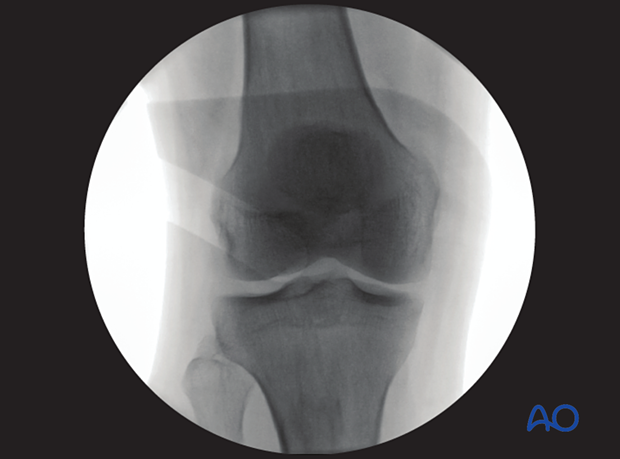
Anatomical landmarks and lines
The following lines and landmarks can be observed:
- Patellar apex
- Patellar base
- Patellar body
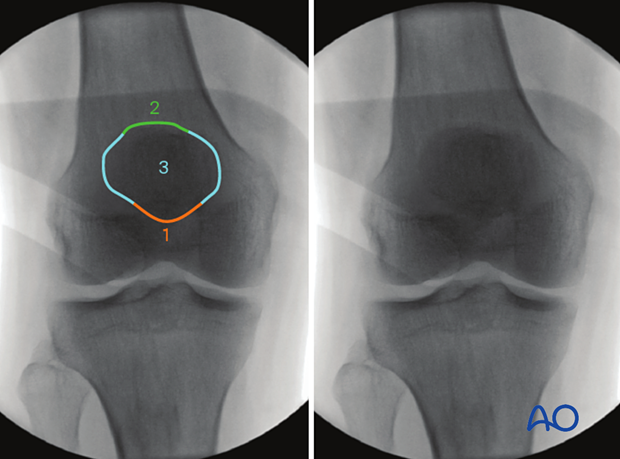
What can be observed
This view is particularly useful to identify:
- Malreduction of transverse and sagittal fractures
- Patella baja (possible quadriceps tendon rupture)
- Patella alta (possible patella tendon rupture)
- Patellar bipartita or tripartita (almost always bilateral, therefore also obtain images of the contralateral side)
Images of the contralateral side may be beneficial as reference.
3. Lateral view
Positioning for optimal view
To obtain the optimal lateral view of the distal femur:
- the leg is flexed to elevate the knee.
- the leg is in neutral rotation.
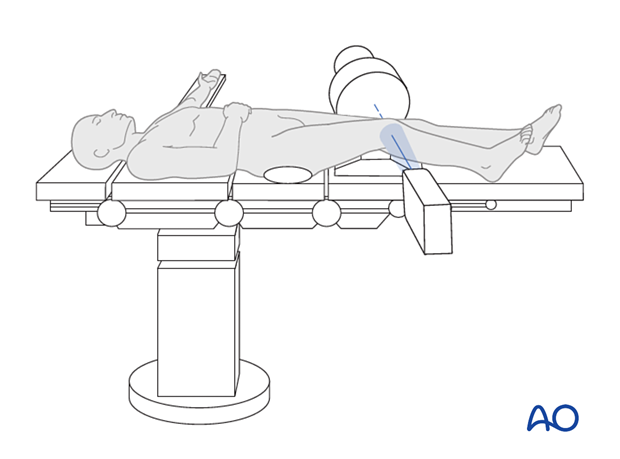
- the beam is placed parallel to the knee joint plane (this is around 79-83° to the anatomical axis of the femur).
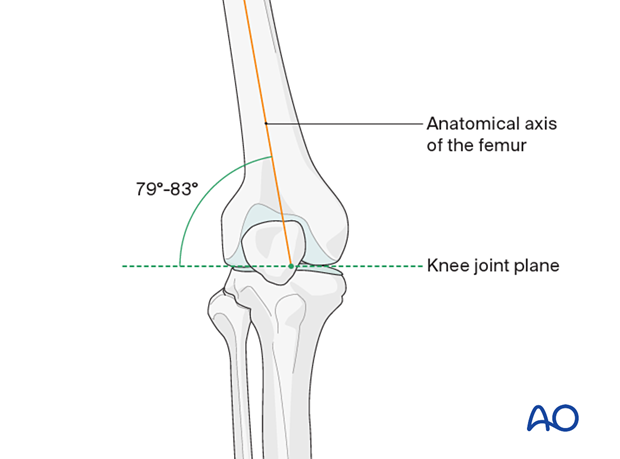
Verification of optimal view
The optimal lateral view of the patella is obtained when:
- the femoral condyles are superimposed in the anterior, distal and posterior aspects.
- the femoral condyles are centered on the screen.
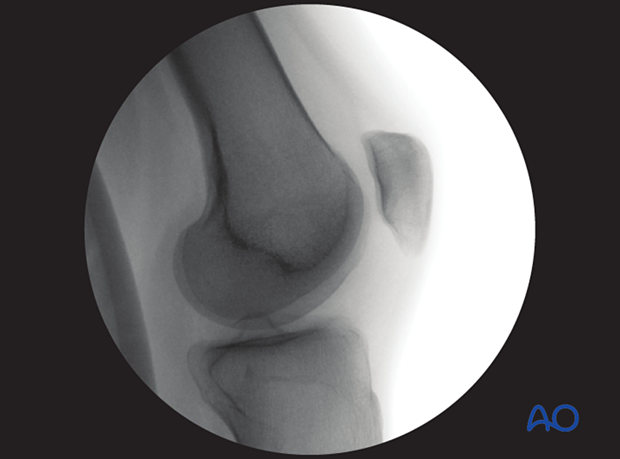
Anatomical landmarks and lines
The following lines and landmarks can be observed in the lateral view of the patella:
- The articular ridge between medial and lateral facets.
- Patellar apex
- Patellar base
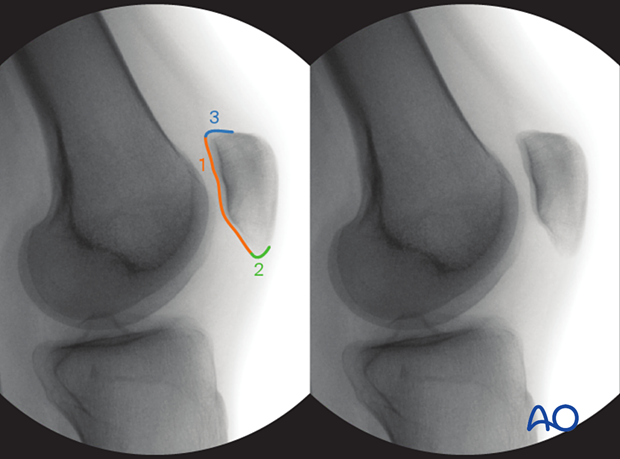
What can be observed
This view is particularly useful to identify:
- Malreduced transverse fractures
- Patella baja (possible quadriceps tendon rupture)
- Patella alta (possible patella tendon rupture)
- Intraarticular hardware
Images of the contralateral side may be beneficial as a reference.
4. Accessory view of the lateral facet
Positioning for optimal view
Start from the ideal lateral view of the patella, rotate the leg 20-30° externally until the optimal view of the lateral facet is obtained.

Verification of optimal view
The optimal view of the lateral patellar facet is obtained when the lateral facet projects as one dense line.
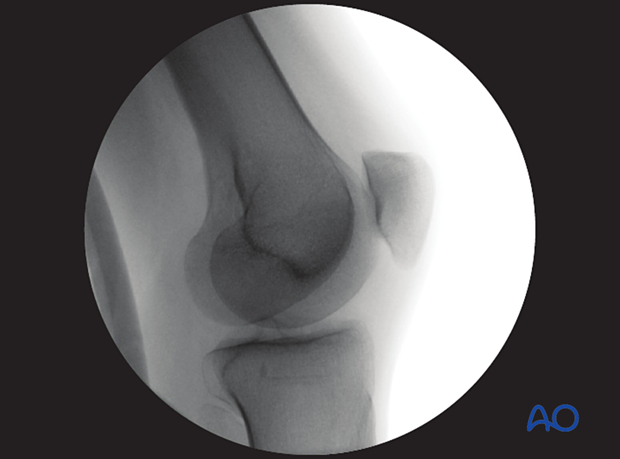
Anatomical landmarks and lines
The following lines and landmarks are seen:
- lateral patellar facet
- patellar apex
- patellar base
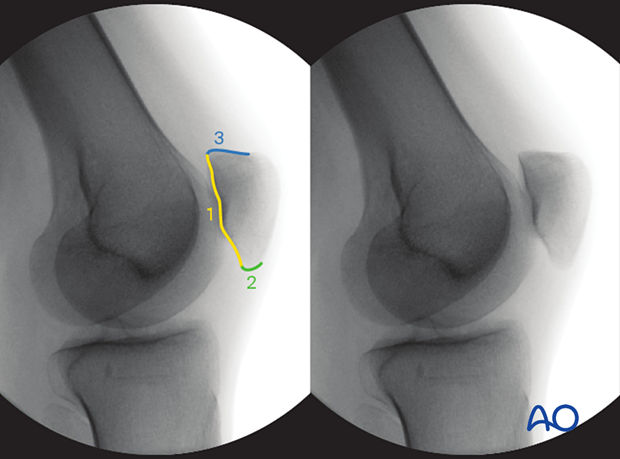
What can be observed
This view is particularly useful to assess:
- reduction of the lateral facet.
- intraarticular hardware penetrating the lateral facet.
5. Accessory view of the medial facet
Positioning for optimal view
Start from the ideal lateral view of the patella, rotate the leg 20-30° internally until the optimal view of the medial facet is obtained.
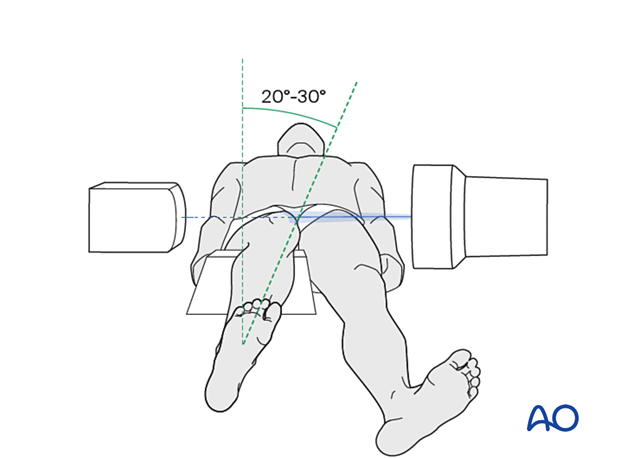
Verification of optimal view
The optimal view of the medial patellar facet is obtained when the medial facet projects as one dense line.
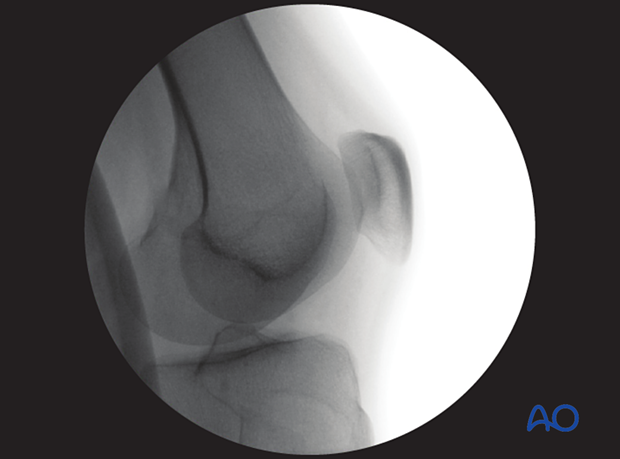
Anatomical landmarks and lines
The following lines and landmarks are seen:
- medial patellar facet
- patellar apex
- patellar base
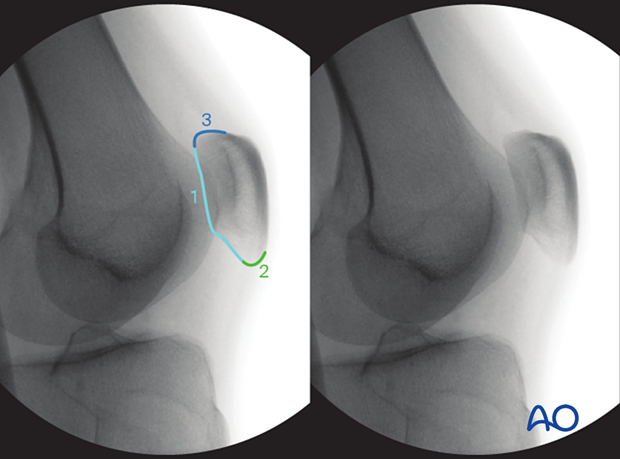
What can be observed
This view is particularly useful to assess:
- reduction of the medial facet.
- intraarticular hardware penetrating the medial facet
6. Skyline view
Positioning for optimal view
- Knee flexed 90°
- Angle beam 30° from the horizontal axis
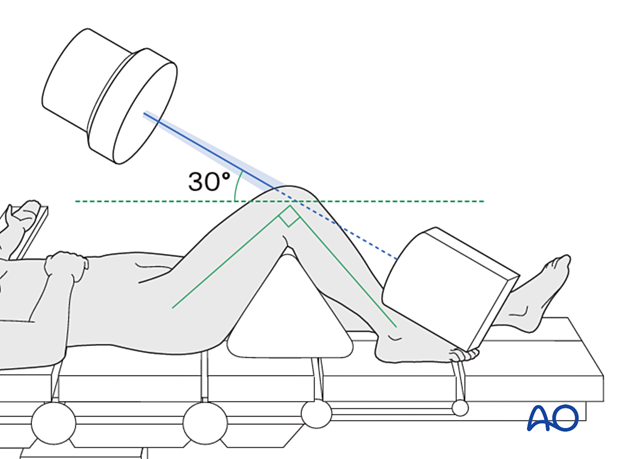
The transmitter is placed either laterally or medially to the foot (thus, the beam is not entirely parallel to the axis of the tibia)
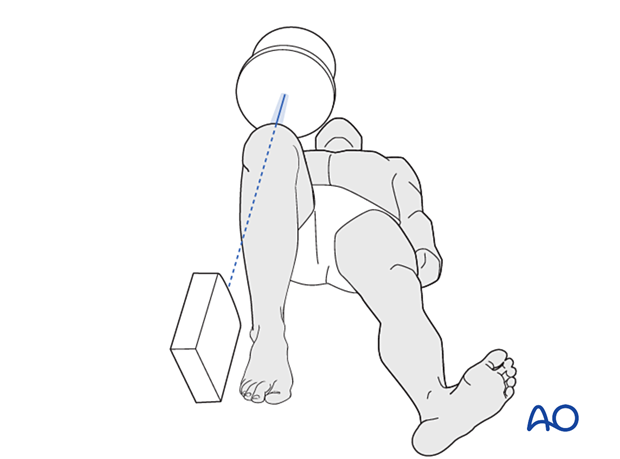
Verification of optimal view
The optimal skyline view of the patella is obtained when the patellofemoral notch and the medial and lateral facets of the patella are visualized as dense lines.
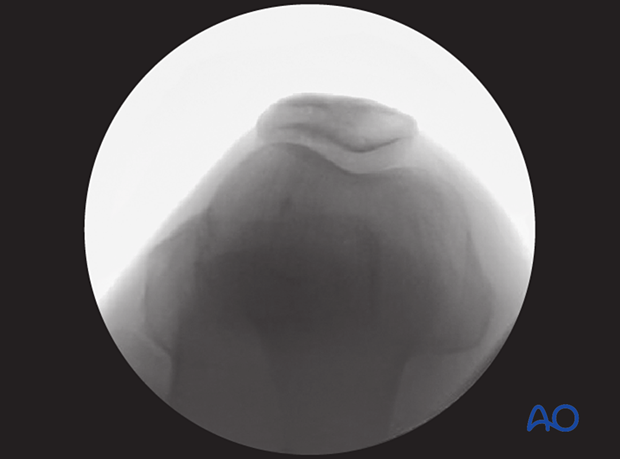
Anatomical landmarks and lines
The following lines and landmarks can be observed in the skyline view:
- Patellofemoral notch
- Medial facet
- Lateral facet
- The anterior part of the lateral femoral condyle
- The anterior part of the medial femoral condyle
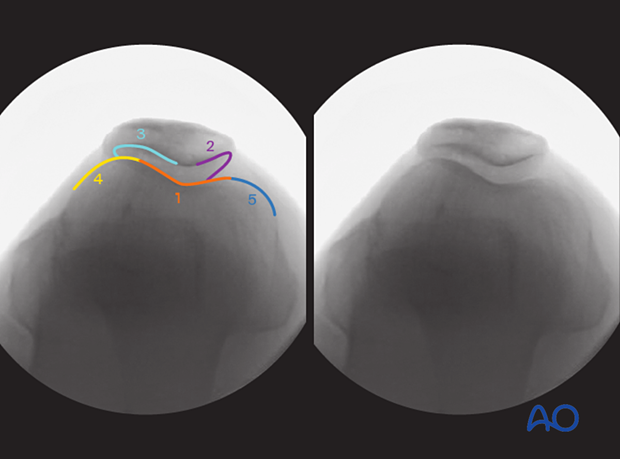
What can be observed
The skyline view is particularly useful to identify:
- Malreductions in the sagittal plane
- Patella bipartita or tripartita
- Intraarticular hardware
- Lateralization of the patella (possible patellar subluxation)
- Hardware in the patellofemoral notch (distal femur fixation)












